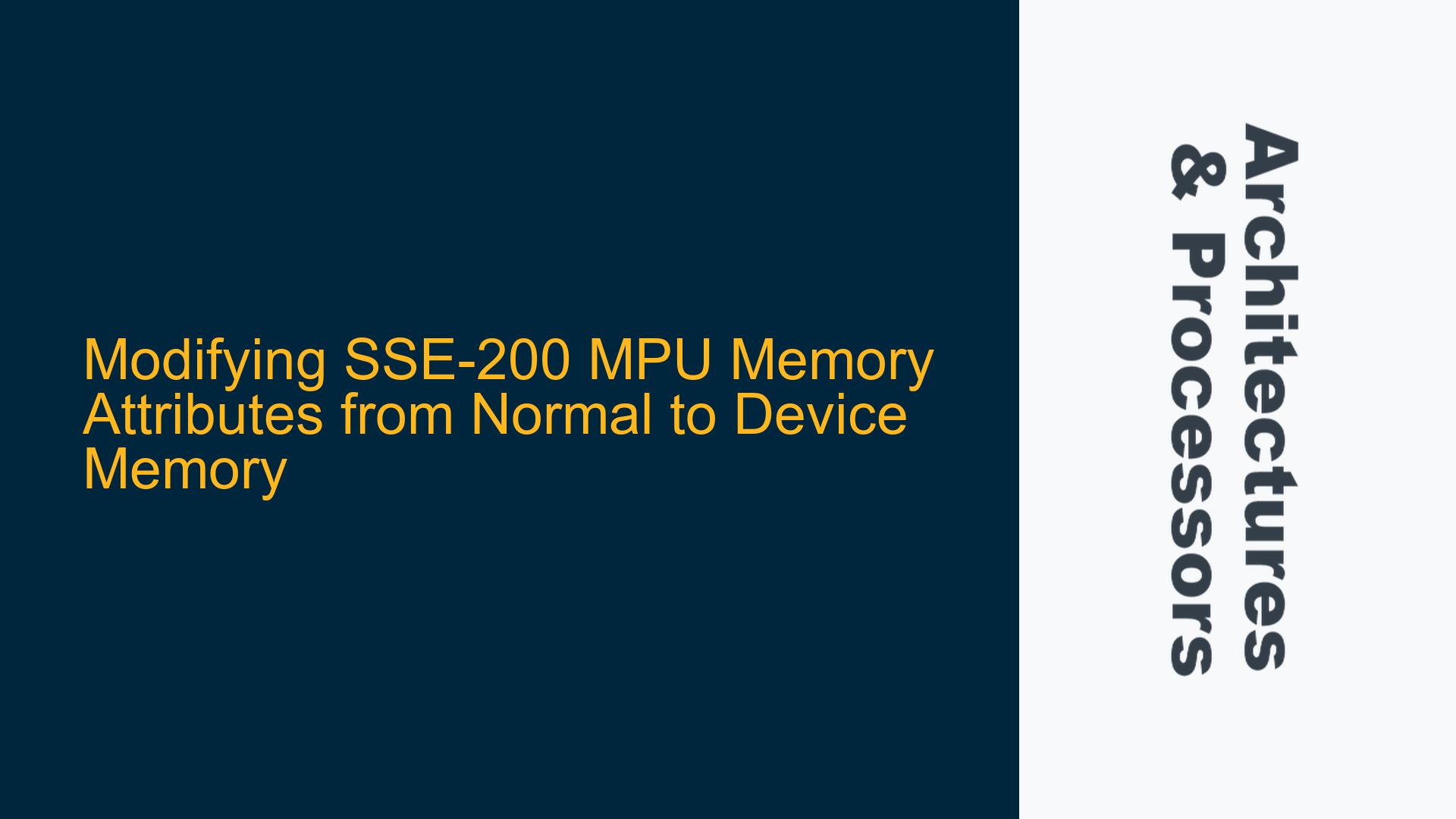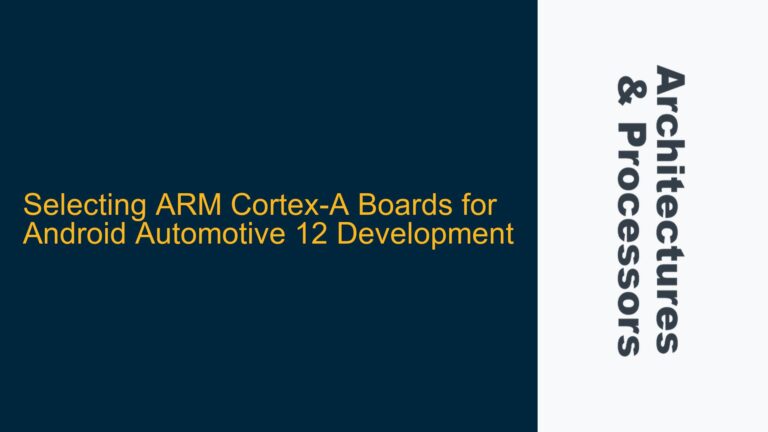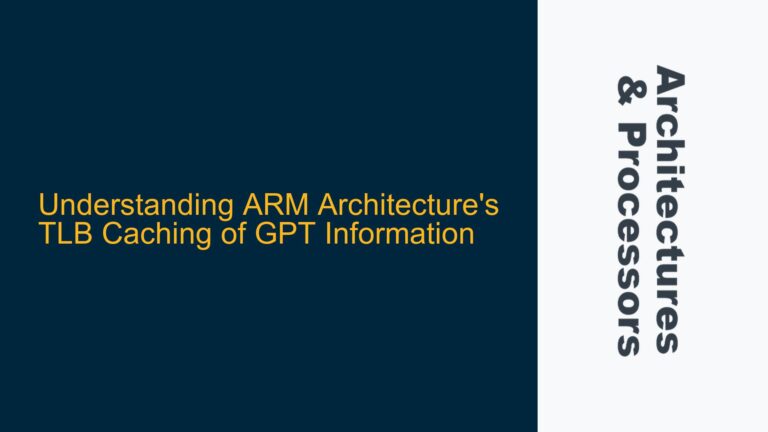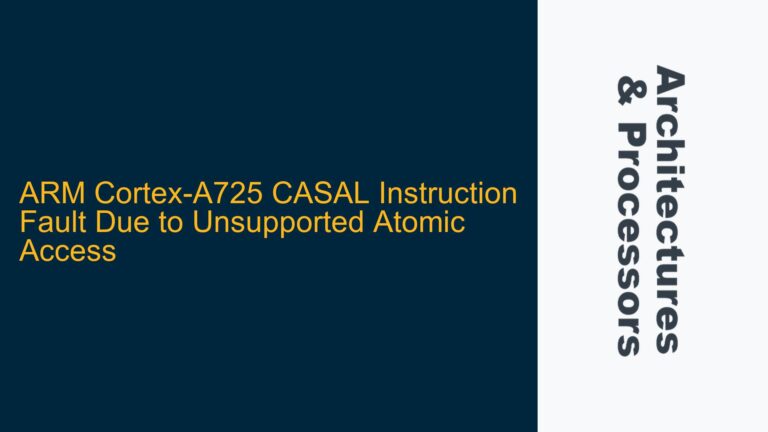ARM Cortex-M System Memory Map and SSE-200 MPU Configuration Challenges
The ARM Cortex-M system memory map, as defined in the ARMv8-M architecture, partitions the address space into specific regions with predefined memory attributes. One such region is the 0x6000_0000 to 0x7FFF_FFFF range, which is typically designated as "normal" memory. Normal memory is characterized by its support for speculative accesses, reordering, and merging of reads and writes, which are essential for optimizing performance in general-purpose computing tasks. However, in certain embedded systems, particularly those involving custom IP blocks or specialized peripherals, it may be necessary to reconfigure this region as "device" memory. Device memory, unlike normal memory, has strict access ordering requirements and does not support speculative accesses, making it suitable for memory-mapped I/O operations.
The SSE-200 (System Security Engine-200) MPU (Memory Protection Unit) provides a mechanism to modify memory attributes, including changing a region from normal to device memory. However, this reconfiguration is not without challenges. The primary concern is ensuring that the MPU configuration aligns with the hardware capabilities and the system’s operational requirements. Misconfigurations can lead to unpredictable behavior, including data corruption, system crashes, or even security vulnerabilities.
The ARMv8-M architecture reference manual provides guidelines on memory attributes and MPU configuration, but it does not explicitly address the implications of redefining a predefined memory region. This lack of explicit guidance can lead to uncertainty, particularly when attempting to use the 0x6000_0000 to 0x7FFF_FFFF region as an AHB5 expansion port for custom IP. The AHB5 (Advanced High-performance Bus 5) protocol, which is commonly used for connecting high-speed peripherals, requires strict access ordering and non-speculative behavior, characteristics that are inherently provided by device memory but not by normal memory.
Memory Attribute Conflicts and AHB5 Protocol Requirements
The decision to reconfigure the 0x6000_0000 to 0x7FFF_FFFF region from normal to device memory is driven by the need to interface with custom IP blocks via the AHB5 expansion port. However, this reconfiguration introduces potential conflicts between the memory attributes required by the AHB5 protocol and those originally defined for the normal memory region. The AHB5 protocol mandates that memory accesses to the expansion port must be non-speculative, non-reordering, and non-merging, which are attributes typically associated with device memory. Normal memory, on the other hand, allows for speculative accesses, reordering, and merging, which are incompatible with the AHB5 protocol.
One of the primary concerns when reconfiguring memory attributes is the impact on existing software and hardware components that may rely on the default behavior of normal memory. For example, if a software component performs speculative reads or writes to the 0x6000_0000 to 0x7FFF_FFFF region, reconfiguring this region as device memory could lead to unexpected behavior, as speculative accesses are not allowed in device memory. Similarly, hardware components that rely on the reordering or merging of memory accesses may fail to operate correctly if the memory attributes are changed.
Another consideration is the potential impact on system performance. Device memory accesses are typically slower than normal memory accesses due to the strict ordering requirements and the lack of speculative behavior. This performance penalty must be carefully evaluated, particularly in systems where the 0x6000_0000 to 0x7FFF_FFFF region is heavily utilized. Additionally, the MPU configuration process itself can introduce latency, particularly if the MPU is reconfigured dynamically during system operation.
Implementing MPU Reconfiguration and Ensuring System Stability
To successfully reconfigure the 0x6000_0000 to 0x7FFF_FFFF region from normal to device memory, a systematic approach must be followed to ensure system stability and compatibility with the AHB5 protocol. The first step is to carefully review the ARMv8-M architecture reference manual and the SSE-200 MPU documentation to understand the constraints and requirements for memory attribute reconfiguration. This review should include an analysis of the MPU register settings, the memory attribute encoding, and the impact of reconfiguration on system behavior.
The next step is to update the MPU configuration to redefine the 0x6000_0000 to 0x7FFF_FFFF region as device memory with the nGnRnE (non-Gathering, non-Reordering, non-Early Write Acknowledgement) attributes. The nGnRnE attributes ensure that memory accesses to this region are strictly ordered, non-speculative, and non-merging, which aligns with the requirements of the AHB5 protocol. The MPU configuration should be performed during system initialization, before any software or hardware components attempt to access the reconfigured memory region.
Once the MPU configuration is updated, it is essential to validate the new memory attributes to ensure that they have been applied correctly. This validation can be performed by writing and reading test patterns to the 0x6000_0000 to 0x7FFF_FFFF region and verifying that the accesses exhibit the expected behavior for device memory. Any discrepancies should be investigated and addressed, as they may indicate an incorrect MPU configuration or a hardware issue.
In addition to validating the memory attributes, it is crucial to update any software components that interact with the 0x6000_0000 to 0x7FFF_FFFF region to ensure compatibility with the new memory attributes. This update may involve modifying code that performs speculative accesses, reorders memory operations, or relies on the merging of reads and writes. Failure to update these software components could result in undefined behavior, data corruption, or system crashes.
Finally, it is important to monitor system performance and stability after reconfiguring the memory attributes. The performance impact of device memory accesses should be evaluated, particularly in systems where the 0x6000_0000 to 0x7FFF_FFFF region is heavily utilized. Any performance degradation should be addressed through optimization techniques, such as minimizing the number of device memory accesses or using caching mechanisms where appropriate. System stability should also be monitored to ensure that the reconfiguration has not introduced any new issues, such as race conditions or timing violations.
In conclusion, reconfiguring the 0x6000_0000 to 0x7FFF_FFFF region from normal to device memory using the SSE-200 MPU is a complex but achievable task. By carefully analyzing the memory attribute requirements, updating the MPU configuration, validating the new attributes, and ensuring software compatibility, it is possible to successfully interface with custom IP blocks via the AHB5 expansion port while maintaining system stability and performance.






